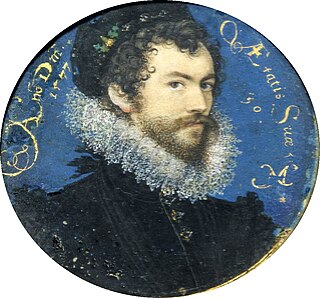James Deacon (died May 1750) was an English miniature painter, known as an artist and as a musician.
In 1746 the miniature-painter Christian Friedrich Zincke was obliged to give up his house in Tavistock Street, Covent Garden, and retire from his profession due to failing eyesight. Deacon then took this house and the goodwill of the older painter's business. In the print room of the British Museum there are miniatures by him of the marine painter Samuel Scott and his wife.

Christian Friedrich Zincke was a German miniature painter active in England in the 18th century.

Covent Garden is a district in London, on the eastern fringes of the West End, between St Martin's Lane and Drury Lane. It is associated with the former fruit-and-vegetable market in the central square, now a popular shopping and tourist site, and with the Royal Opera House, which itself may be referred to as "Covent Garden". The district is divided by the main thoroughfare of Long Acre, north of which is given over to independent shops centred on Neal's Yard and Seven Dials, while the south contains the central square with its street performers and most of the historical buildings, theatres and entertainment facilities, including the London Transport Museum and the Theatre Royal, Drury Lane.

The British Museum, in the Bloomsbury area of London, United Kingdom, is a public institution dedicated to human history, art and culture. Its permanent collection of some eight million works is among the largest and most comprehensive in existence, having been widely sourced during the era of the British Empire. It documents the story of human culture from its beginnings to the present. It was the first public national museum in the world.
He had not long been established in his profession when, attending as a witness at the Old Bailey, apparently at the 'Black Sessions,' he caught gaol fever and died in May 1750.

The Central Criminal Court of England and Wales is a court in London and one of a number of buildings housing the Crown Court. Part of the present building stands on the site of the medieval Newgate gaol, on a road named Old Bailey that follows the line of the City of London's fortified wall, which runs from Ludgate Hill to the junction of Newgate Street and Holborn Viaduct. The Old Bailey has been housed in several structures near this location since the sixteenth century, and its present building dates from 1902, designed by Edward William Mountford.











